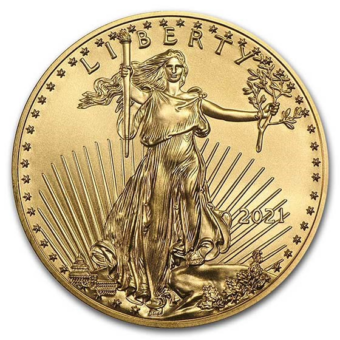A Daily Journey Through the Week's Market
Monday - 12.23.24: Gold prices edged higher by 0.2% to $2,626.47 per ounce in thin trading, as investors covered short positions following the Federal Reserve's cautious stance on 2025 rate cuts. The Fed's recent 25-basis-point rate cut and conservative outlook influenced this trend. Additionally, a softer U.S. dollar and lower Treasury yields, alongside slowing inflation data for November, supported gold's increase. Silver prices rose by 0.6% to $29.69 per ounce.
Tuesday - 12.24.24: In a holiday-trimmed week, gold prices increased by 0.3% to $2,620.83 per ounce, as investors braced for President-elect Donald Trump's trade tariff policies and a less aggressive rate-cut path from the Federal Reserve in 2025. U.S. gold futures climbed 0.2% to $2,634.10. The Fed's indication of fewer rate cuts next year, coupled with anticipated trade policies, contributed to market caution. Silver prices added 0.2% to $29.71 per ounce.
Wednesday - 12.25.24: Christmas Day - Markets Closed
Thursday - 12.26.24: Gold prices rose by 0.5% to $2,627.62 per ounce in holiday-thinned trade, with markets awaiting cues on the Federal Reserve's 2025 rate plan and policies from the incoming Trump administration. U.S. gold futures added 0.3% to $2,642.30. Analysts predict a volatile year ahead for bullion, driven by geopolitical tensions and potential policy shifts. Silver gained 0.1% to $29.64 per ounce.
Friday - 12.27.24: Gold and silver prices fell in early U.S. trading Friday, pressured by rising U.S. Treasury yields, with February gold down $15.80 at $2,638.10 and March silver off $0.424 at $29.965. Asian and European stock markets were mixed but leaned higher, while U.S. stock indexes pointed to lower openings amid a quieter holiday season. In overnight news, Japan’s finance minister pledged action against excessive yen movements, as the Bank of Japan signaled a potential rate hike next month.
Silver set to outshine gold in 2025
Driving the news: TD Securities predicts silver will outperform gold again in 2025, fueled by rebounding demand from the U.S. and China. Analysts project silver prices will hit $36/oz by Q4 2025 as inventories shrink.
Why it matters:
- Tightening supply: A recovering U.S. and Chinese economy will absorb excess inventories, with increased ETF buying accelerating depletion.
- Industrial demand: Solar installations and industrial resilience are adding fundamental support, despite some cross-currents in traditional demand sectors.
- Policy watch: The new Trump administration's stance on tariffs and climate policy could influence silver's trajectory.
By the numbers:
- Q1 2025: $33.25/oz
- Q2 2025: $33/oz
- Q3 2025: $34/oz
- Q4 2025: $36/oz
Between the lines: Analysts see silver as the most "convex" trade in commodities, with potential for higher prices as inventories approach depletion.
What’s next: Prices could rise further in 2026, with silver forecasted between $38 and $39/oz, driven by ongoing industrial and investment demand.
BRICS currency reserve aims to disrupt Western financial dominance
Driving the news: BRICS nations are ramping up efforts to challenge the U.S. dollar’s global dominance, with plans for a BRICS currency reserve that could reshape the Western financial order.
Why it matters:
- De-dollarization push: BRICS countries are settling trade in local currencies, diversifying reserves with gold, and pursuing de-dollarization strategies to reduce reliance on the U.S. dollar.
- IMF alternative: A BRICS currency reserve could provide a parallel system to the IMF, potentially shifting economic power dynamics.
- Veteran insight: KV Kamath, Chairman of Jio Financial Services, emphasized the initiative’s potential to create a global economy independent of Western influence.
What they’re saying:
- “A BRICS currency reserve will soon shake up the Western financial world,” Kamath told CNBC-TV18, suggesting this development could significantly dampen U.S. hegemony.
What’s next: While details of the BRICS currency reserve remain sparse, the initiative aligns with broader efforts to establish a multipolar financial system, challenging the dollar’s role in global trade and reserves.
How much gold should investors hold in 2025?
Driving the news: While higher bond yields and a resilient economy present challenges for gold in 2025, it remains a critical hedge in diversified portfolios, according to Tom Bruce, Macro Investment Strategist at Tanglewood Total Wealth Management.
Why it matters:
- Gold's role: Bruce recommends a 9.5% allocation in gold, calling it a vital portfolio hedge against market downturns.
- Central bank demand: Central banks continue diversifying away from the U.S. dollar, with gold allocations potentially rising from 10% to as much as 20–25% of reserves.
- Long-term outlook: Despite near-term headwinds from rising real yields, gold’s long-term uptrend remains intact.
By the numbers:
- 2025 gold price forecast: +10%, potentially reaching just below $3,000/oz.
- Central bank gold reserves during the Cold War: ~30%. Current levels: ~10%.
Between the lines: Although gold may see subdued gains compared to its 2024 rally of nearly 30%, Bruce emphasizes its value as a core component of any portfolio.
What’s next: Investors should watch real interest rates and central bank buying trends, as these will shape gold’s performance in 2025 and beyond.
BRICS eyes gold-backed cryptocurrency to challenge U.S. dollar dominance
Driving the news: The BRICS bloc may be moving closer to creating a gold-backed cryptocurrency as part of its de-dollarization efforts. This potential move combines the alliance's growing embrace of cryptocurrency with its aggressive accumulation of gold reserves throughout 2024.
Why it matters:
- De-dollarization drive: BRICS has prioritized reducing reliance on the U.S. dollar, aiming to establish itself as a global economic counterweight to Western dominance.
- Gold and crypto fusion: While the bloc has denied plans for a native currency, its actions suggest a possible shift toward a digital asset backed by gold to facilitate trade and settlement.
- Geopolitical pressure: Donald Trump’s return to the White House and proposed 100% tariffs on nations abandoning the dollar add urgency to BRICS’ plans.
What they’re saying:
- Russian President Vladimir Putin recently affirmed the uncontrollable nature of Bitcoin, signaling openness to cryptocurrency.
- Observers speculate BRICS could leverage blockchain technology, aligning with its AI and technology alliance.
Between the lines: A gold-backed cryptocurrency would fast-track BRICS’ de-dollarization ambitions, but such a move could escalate tensions with Western economies.
What’s next: While no formal announcement has been made, BRICS’ actions—gold accumulation and crypto adoption—indicate it may double down on establishing a global financial system independent of the U.S. dollar.
Gold rises on safety demand amid holiday lull
Driving the news: Gold prices climbed on Thursday, gaining 0.8% to $2,634.39 per ounce, as geopolitical tensions and inflation fears drove safe-haven demand during light holiday trading.
Why it matters:
- Geopolitical risk: Escalating conflict in Ukraine, including Russia's attack on Ukraine’s electrical system, boosted gold's appeal as a hedge.
- Central bank demand: Continued purchases by central banks and potential retail demand amid inflation expectations are set to support gold prices into 2025.
- Policy watch: The incoming Trump administration’s economic policies—tariffs, deregulation, and tax reforms—could influence inflation and Federal Reserve strategy.
By the numbers:
- U.S. gold futures rose 0.7% to $2,654.60.
- 2024 performance: Gold has gained 28%, peaking at $2,790.15 on Oct. 31.
- 2025 forecast: Prices are expected to surpass $3,000/oz in the first half of the year.
Between the lines: Analysts predict heightened volatility in 2025, with geopolitical tensions driving gains in the first half, followed by potential profit-taking in the second half.
What’s next: Investors will closely monitor Federal Reserve policy and Trump administration economic strategies for signals on inflation and interest rates, key factors for gold’s trajectory.
Hedge against deficit and inflation risks with gold and Bitcoin
Driving the news: VanEck highlights gold and Bitcoin as key hedges for 2025, as persistent fiscal deficits and inflation risks loom. CEO Jan van Eck predicts $500 billion in government spending cuts, but warns this won’t eliminate the deficit or inflationary pressures.
Why it matters:
- Fiscal concerns: Even with spending reductions, the deficit is expected to grow, driving inflation risks and potential market volatility.
- De-dollarization trend: Gold's bull market is supported by foreign central bank purchases and a global shift away from the U.S. dollar.
- Dual hedge: Bitcoin is positioned alongside gold as a hedge against fiscal and economic uncertainty.
By the numbers:
- 2024 gold performance: +28%.
- Gold mining sector: +21%, lagging bullion despite record producer margins.
Between the lines: VanEck suggests allocating to the mining sector in addition to gold bullion, citing the potential for miners to outperform during a bull market.
What’s next: Investors should stay cautious, as unexpected central bank policy shifts, geopolitical surprises, or subdued inflation could limit gold’s gains or increase volatility. Diversifying with Bitcoin and mining stocks may mitigate broader risks.
Gold rises as investors weigh Fed rate outlook
Driving the news: Gold prices rose 0.8% to $2,636.57 per ounce in thin holiday trading, as investors digested mixed U.S. jobs data and speculated on the Federal Reserve's future interest-rate policy.
Why it matters:
- Jobs signal uncertainty: Continuing unemployment claims reached a three-year high at 1.91 million, highlighting challenges for out-of-work Americans.
- Fed's cautious stance: Despite monetary easing in 2024, Fed policymakers signaled fewer rate cuts for 2025, citing the need for further inflation progress. Lower borrowing costs typically support gold.
By the numbers:
- 2024 gold performance: +28%, marking its strongest annual gain since 2010.
- Spot gold: $2,636.57/oz.
- COMEX gold futures: $2,649.60/oz.
Between the lines: Gold’s rally has been fueled by central bank buying and safe-haven demand, but its momentum has slowed since November due to a stronger dollar following President-elect Donald Trump’s victory.
What’s next: Investors will monitor U.S. inflation data and the Fed's policy path in 2025 to gauge further moves in gold prices, while the metal remains a key hedge against economic uncertainty.
Next Week’s Key Events
Monday, Dec. 30
- 10:00 am: Pending Home Sales (November)
Tuesday, Dec. 31
- 9:00 am: S&P Case-Shiller Home Price Index (November)
Wednesday, Jan. 1
- New Year’s Holiday: Markets Closed
Thursday, Jan. 2
- 8:30 am: Initial Jobless Claims (Week ending Dec. 28)
Friday, Jan. 3
- 10:00 am: ISM Manufacturing (December)
IMPACT ON PRECIOUS METALS MARKETS
Pending Home Sales
A strong pending home sales report indicates a robust housing market, signaling economic health. This may reduce safe-haven demand for gold and silver. Conversely, weaker data could support precious metals as investors seek safety amid economic uncertainty.
S&P Case-Shiller Home Price Index
Rising home prices reflect consumer wealth and economic stability, potentially reducing the appeal of gold and silver. If prices weaken, it may signal economic slowing, boosting demand for these safe-haven assets.
Initial Jobless Claims
Higher-than-expected jobless claims indicate a weakening labor market, which could increase demand for gold and silver as hedges against economic instability. Conversely, lower claims support a stronger economy, reducing precious metals’ appeal.
ISM Manufacturing Index
A strong ISM Manufacturing report signals industrial strength, possibly boosting silver due to its industrial applications while reducing gold's safe-haven demand. Weak manufacturing data may lead to increased demand for both metals as economic hedges.





















